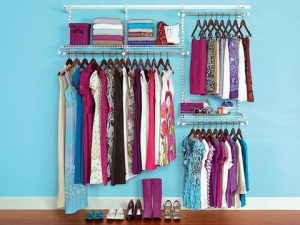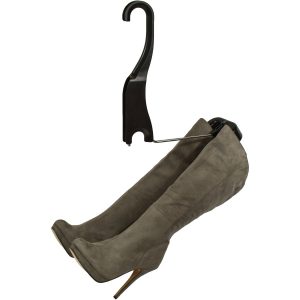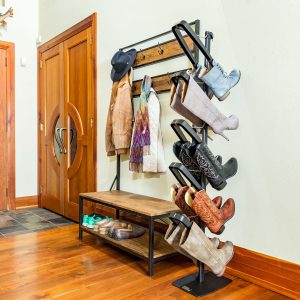 If you’re like most Americans, you probably don’t have enough closet space. While most American homes that were built after the mid-20th century have closet space incorporated, much of it is far from generous, and many older homes have no built-in closets at all. While decluttering and donating extraneous belongings is one solution, for many people using the closet space they do have more effectively is a bigger one. Here are a number of tips to help with that:
If you’re like most Americans, you probably don’t have enough closet space. While most American homes that were built after the mid-20th century have closet space incorporated, much of it is far from generous, and many older homes have no built-in closets at all. While decluttering and donating extraneous belongings is one solution, for many people using the closet space they do have more effectively is a bigger one. Here are a number of tips to help with that:
- Add more hanging space to your space – Professional organizer and Boot Butler inventor Andy Elstein recommends using a closet doubler to get far more use out of the closet space you have. A standard closet contains a shelf, a garment rod that is located between 64 and 72 inches from the floor, and that’s it for built-in organizational elements. Most clothing only uses between 25 and 40 inches of that space, which means an equal amount of space goes completely unused. Hanging an additional garment rod from the built-in garment rod allows for storing up to twice the amount of clothing with one added piece of equipment! This closet doubler allows for both vertical and horizontal adjusting which makes it even better than most.
- Hang or stack more efficiently – Hang clothes like pants or trousers folded over a hanger to save even more space. Use Boot Butler to store long, medium, or even shorter boots or shoes in half the space. Add stackable boxes or shelving to create space for oddly shaped or smaller items within the space itself. There is a lot of space both on the shelf and below the garment rack that could be fully utilized with the proper equipment. The great thing about using boxes is that it allows you to further organize your belongings in a way that will help you keep like things together in an assigned place.
- Remove items you do not regularly use – When summer comes around, put those winter clothes in storage and hang up your warm weather things and vice versa when it gets cold again. The changing of both the season and the wardrobe offers an excellent chance to evaluate your clothing to see what is working and what isn’t. Donate to charity clothes that no longer fit or that you never wear. Chances are if you don’t wear a certain item, you don’t like the way it looks on you, so why keep it any longer?
- Use compression bags for infrequently used fabric items – For items that you will not part with but are infrequently used, there’s always the option of compressing them into airtight bags or containers and stacking them.
These tips do not just apply to clothes closets. Organizing laundry closets, cleaning closets, front closets or kitchen cabinets all require the same steps: essentially, figuring out what is essential to store and creating the most efficient storage landscape to allow for all of it. Closets are designed for easy access, so anything that you will not need to easily access should not be stored in them. That’s what basement, garage, or rented storage is for.


